Should I Let My Cat Outside? What To Consider
Deciding to let your cat outside (or not) - and how you go about it - is an important decision that will affect your cat's quality of life and wellbeing. Here's what to consider before letting your cat outside - including how to follow their every step.

Whether you’ve got an indoor cat or an outdoor cat – they’ll want to venture outdoors someday. (Yes, even your couch potato next to you right now.) But the minute you start to think of the big, scary, beautiful world outside your front door, you might find yourself wondering…should I let my cat outside?
Because on one hand, being cooped up indoors all the time isn’t healthy for your cat. They’ll love the exercise, sunlight, and sensory stimulation from the sights, sounds, and smells of nature with some outdoors time.
On the other hand, the outdoors can also be dangerous for cats. From other cats, larger animals, predators, poisonous plants, pesticides, pet thieves, passing vehicles…there’s no end to the threats your cat might face if they wander off too far from home and get lost.
So in this guide, you’ll find information about indoor vs outdoor cats and pros and cons of both feline lifestyles. Plus, the best way to keep your indoor, outdoor, or indoor/outdoor cat safe – no matter how far they roam.
- Should I let my cat outside?
- What to consider before letting your cat outside
- Indoor vs outdoor cats: Pros & cons
- Will my cat’s behavior change if I let them go outside?
- Letting your cat outside for the first time: Tips for success
- Alternatives to giving your cat unlimited access to the outdoors
- Tips for taking care of an indoor cat
- So…should I let my cat outside?
Should I let my cat outside?
Yes – if you can ensure their safety. In fact, most cats want to be outdoors! (Yes, even Mr. Muffykins hiding under your bed right now.) They may pounce out the front door every chance they get, or look longingly out the window. And it’s no surprise; our domesticated kitties come from a long line of felines who thrived outdoors in the wild.
Read more: Cat Hunting Behavior: Why Does My Cat Hunt?
But does that mean you should let your cat outside? Here are a couple of steps to consider beforehand.

What to consider before letting your cat outside
There are many factors to consider when deciding whether or not to give your cat outdoor access. Let’s start with some general ones.
General factors
- Age. Is your cat old enough to go outside?
- Health. Do they have all their vaccinations? Is your cat in good enough health to be let outdoors?
- Environment. Is your outdoor space – and the surrounding area – safe for cats? Make sure to check that it’s not too hot nor too cold for them to stay outdoors for too long.
Read more:
- Outdoor Cat Care In Winter: How To Keep Yours Safe
- Heat Stroke In Cats: Common Causes And How To Help Your Cat To Cool Off
- Caring For Outdoor Cats: 10 Tips To Keep Them Safe And Healthy
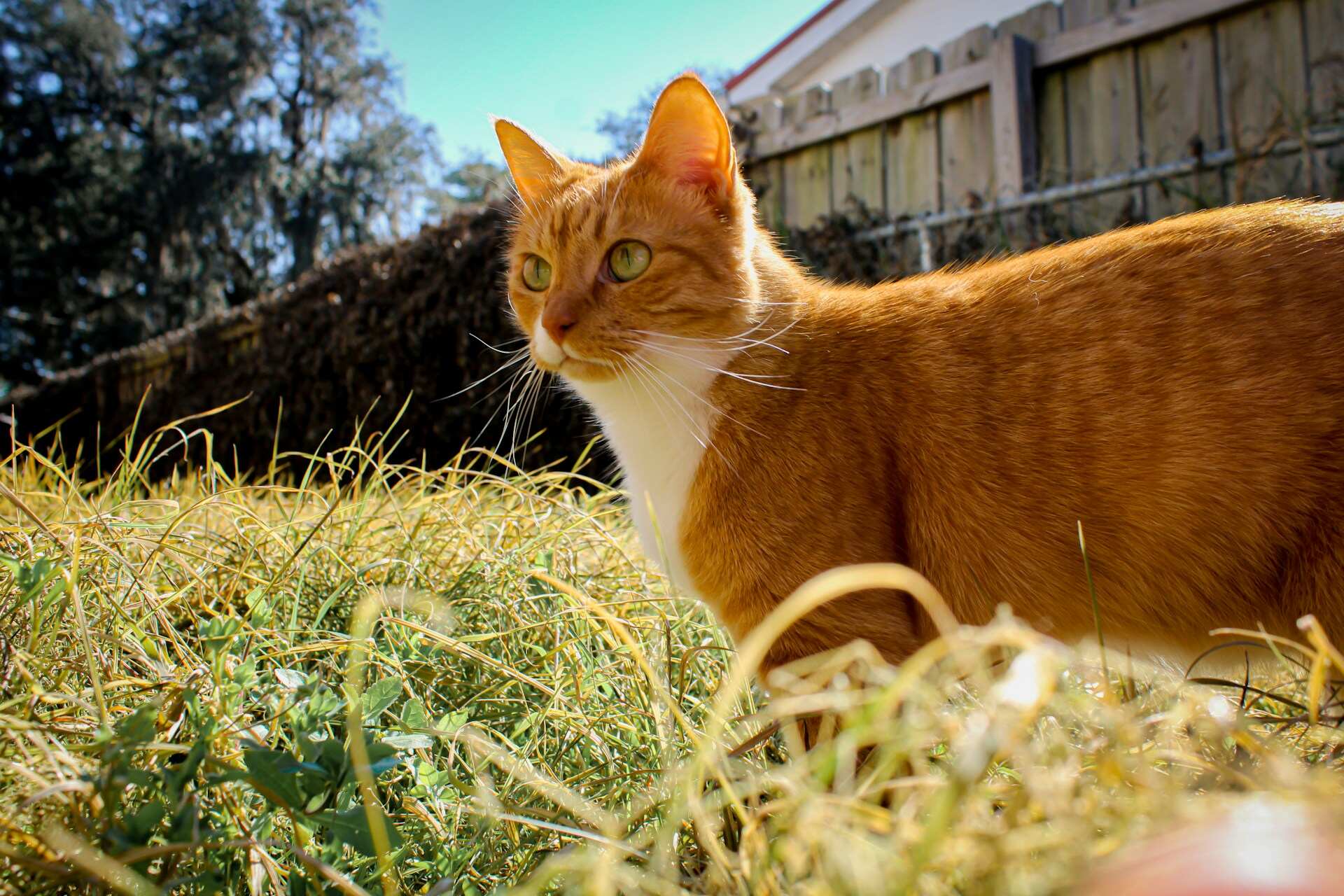
- Laws. Are there any laws governing free-roaming cats in your area? For example, most countries around the world require all pets to be microchipped and registered in a national database at the very least.
- Temperament. Does your cat want to go outside? In some cases, it might not be the best idea. (Like if they’re very young – or on the older side.)
Read more: Is A Microchip Cat ID Enough To Find Your Lost Cat?
Extra safety factors
Cats run away for all sorts of reasons. And in an emergency, a microchip will only help someone else (like a vet or a shelter) identify your lost cat.
That means, you can’t rely on a microchip to track down your cat in real-time or alert you if they’ve escaped.” That’s where a cat GPS tracker can be a lifesaver.
So if your cat has run away because they’re…
- In heat or seeking out a female in heat, it’s wise to consider getting them spayed or neutered.
- On the hunt, it makes sense to keep tabs on their location. So you can prevent them from wandering away too far in search of prey.
Read more:
- Why Do Cats Run Away? 10 Reasons + How To Stop ‘Em
- Cat In Heat? What You Need To Know.
- Catio: What Makes The Perfect Outdoor Cat Enclosure For Your Cat
- Build Your Own Heated Outdoor Cat House In 3 Easy Steps
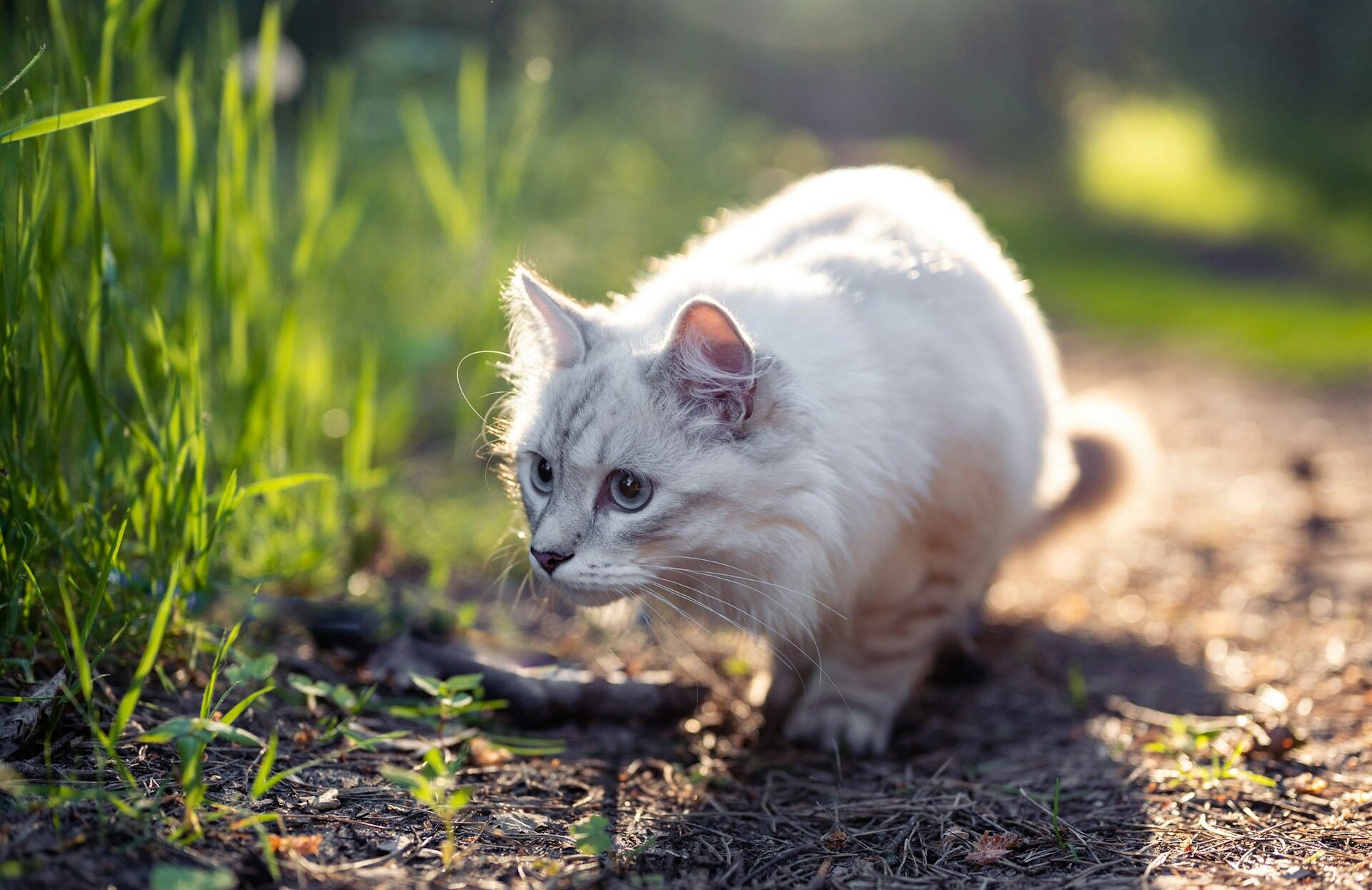
Plus, with your trusty Tractive device strapped to your cat’s collar, you can have 100% peace of mind – knowing you can find your cat with just a glance at your phone.
Or figure out your cat’s favorite hiding, hunting, and hangout spots with their Heat Map and Location History.
Or set up a “safe zone” with Tractive’s Virtual Fence – and get an instant escape alert the minute your cat tries to sneak past it.


Know everywhere your cat goes
See where they are in real-time, no matter how far they go. Get alerts if they roam too far home. Find out where they’ve been and discover their favorite spots. Let others track with you.

“Tractive is my #1 recommendation when it comes to cat trackers. It’s specifically designed for tracking cats so you are sure that it is safe for your cats to use.”
– Clair Chesterman, Owner of CFA and CCA-registered cattery and fostering company, FluffyMeowPaws
Your cat’s personality, needs & history
Last but definitely not least, consider your cat’s own unique personality and situation. Every cat is an individual, after all – what’s best for one cat might not be what’s best for yours.
- For example, if you’ve just adopted a stray cat, chances are your feline friend loves being outdoors. (Because they’ve likely gotten used to it.)
- But if your cat has a traumatic history – they may feel scared going outside and prefer to stay indoors.

- If you have a newborn kitten, they might be too young to go outdoors.
- Or an elderly cat with dementia – they might be better kept indoors or in a fenced-in yard.
Read more:
- New Kitten Checklist: How To Prepare for Your New Cat
- Signs Of Separation Anxiety In Cats & How To Handle It
- Cat Dementia: Signs, Treatment & Outlook
- Why Is My Cat Hiding? 5 Reasons For A Hiding Cat
- Caring For Outdoor Cats: 10 Tips To Keep Them Safe And Healthy
Indoor vs outdoor cats: Pros & cons
There are several important differences between indoor and outdoor cats that are good to keep in mind when you make your decision about letting your cat outdoors. The lives of both indoor and outdoor cats each come with their own set of perks and perils.
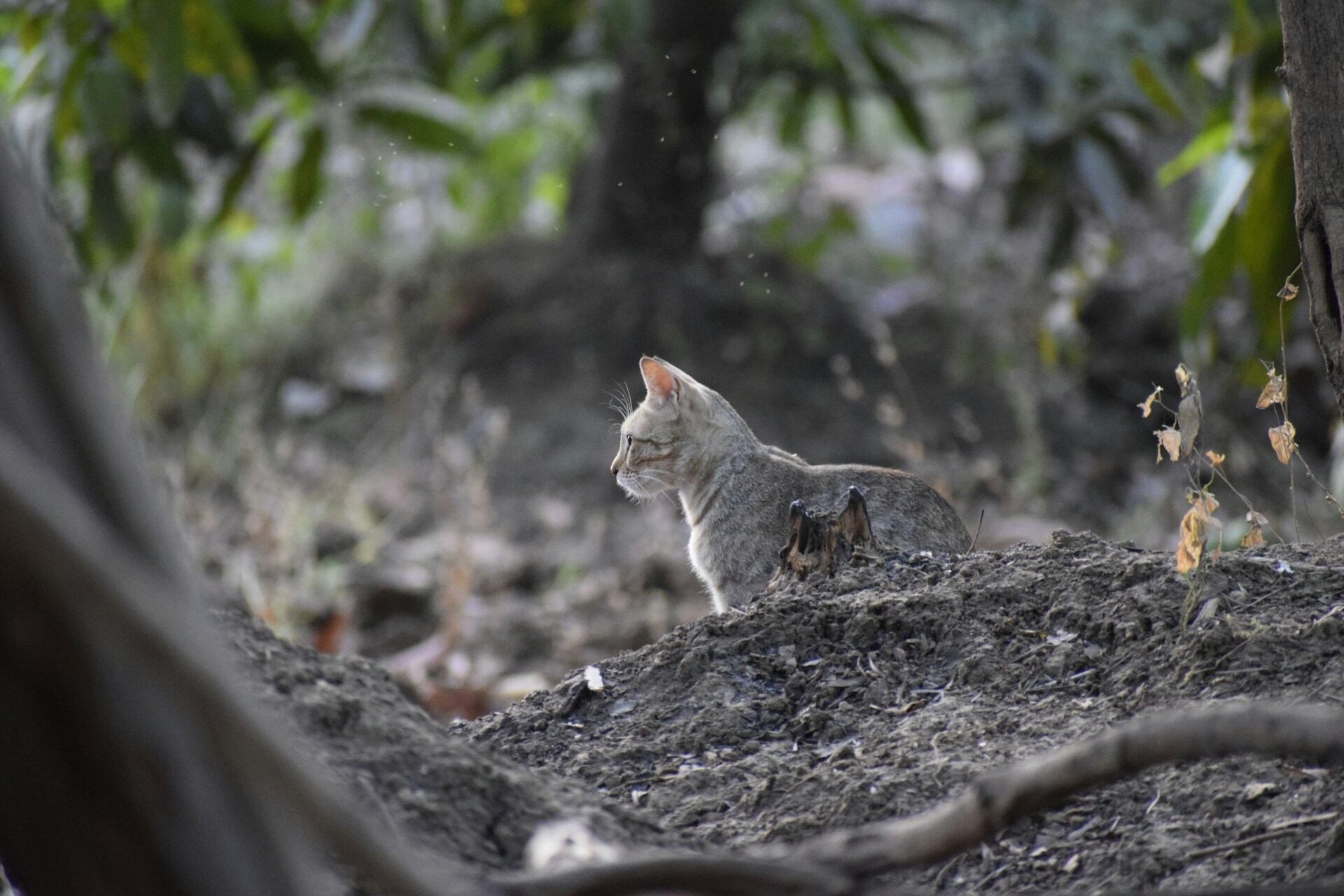
Why should I let my cat go outside? The perks of being an outdoor cat
Outdoor cats typically thrive with the fresh air, enrichment, and physical activity that comes with free access to the great outdoors. Here are a few of the main benefits of letting your cat outside:
- Outside your cat can enjoy engaging in their natural, instinctive feline behaviors – like scratching or stalking prey. (Aka, no more shredded curtains or carpets.)
Read more: How To Stop A Cat From Scratching Furniture – Couches, Carpets & More
- The outdoor world offers your cat plenty of enrichment – new sights, sounds, smells, textures, tastes and experiences – which can enhance their overall wellbeing.
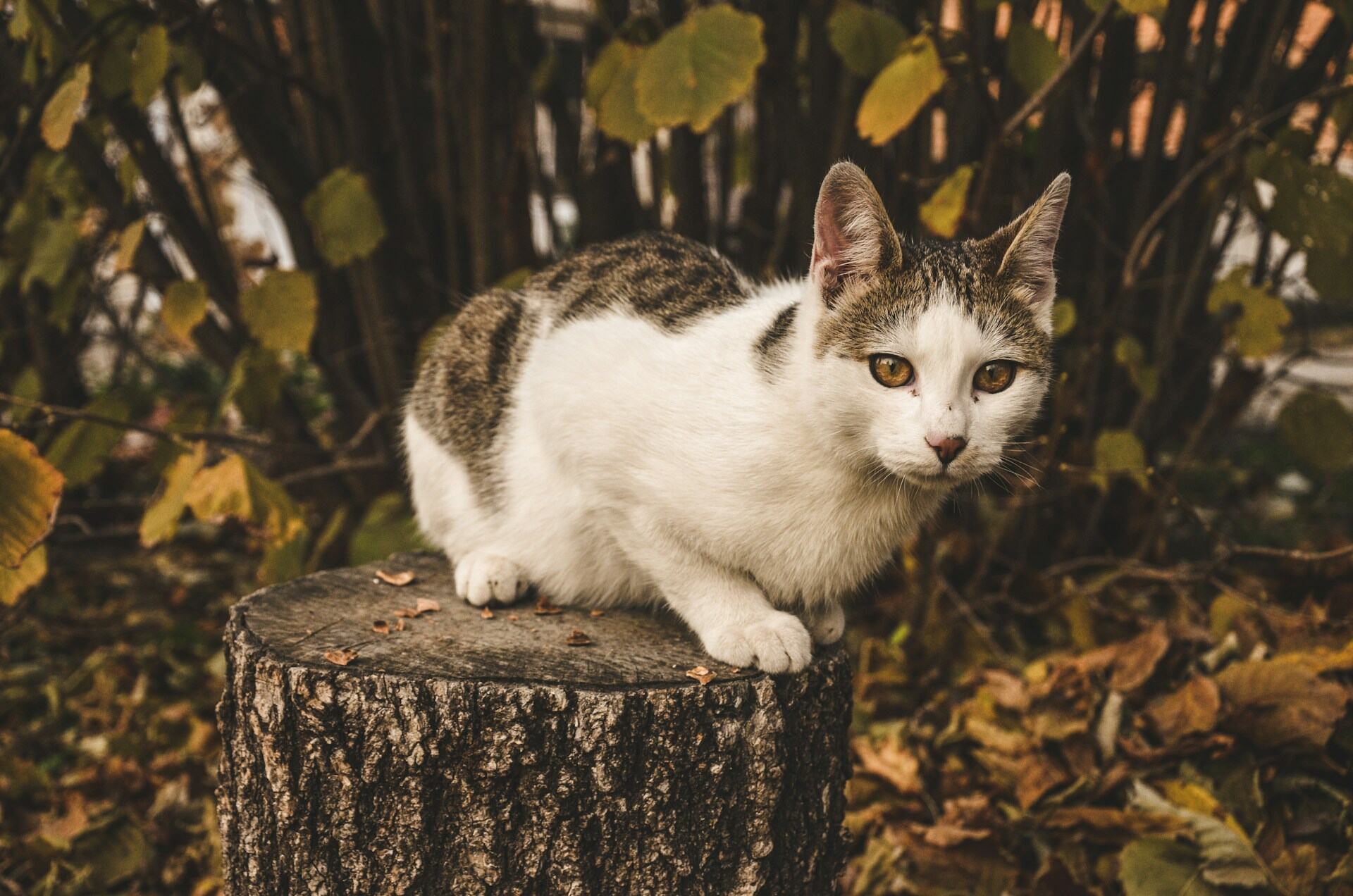
- Your cat will have more opportunities to run, climb and explore – roaming outdoors is great for their physical fitness. Which means fewer health issues in the long run.
In short, your cat can enjoy their feline life to the fullest when they’re allowed safe outdoor access.
The risks of letting your cat outside
Letting a cat outdoors can do wonders for their happiness and wellbeing. But the decision also comes with some potential downsides. For example, your wandering cat might end up getting:
- Injured by a passing vehicle
- Injured or even killed in a fight with another cat, dog, or wild animal
- Infected with a disease or allergy
- Infected by a parasite, like ticks
- Poisoned by a plant that’s toxic to them
- Poisoned by toxic substances – including foods that might be fatally toxic for cats
- Lost, stuck, or trapped somewhere (like a car, or a neighbor’s shed)
- Stolen by pet thieves
Read more:
- Which Plants Are Poisonous To Cats?
- What Can Cats Not Eat? (And Why Not?)
- Ticks On Cats: Prevention, Symptoms And How To Get Rid Of Ticks On Cats Safely
- Dognapping: Pet Kidnapping And How To Keep Your Dog Safe From Dog Thieves
- Cat Pollen Allergy: What To Do If Your Cat Is Allergic to Pollen
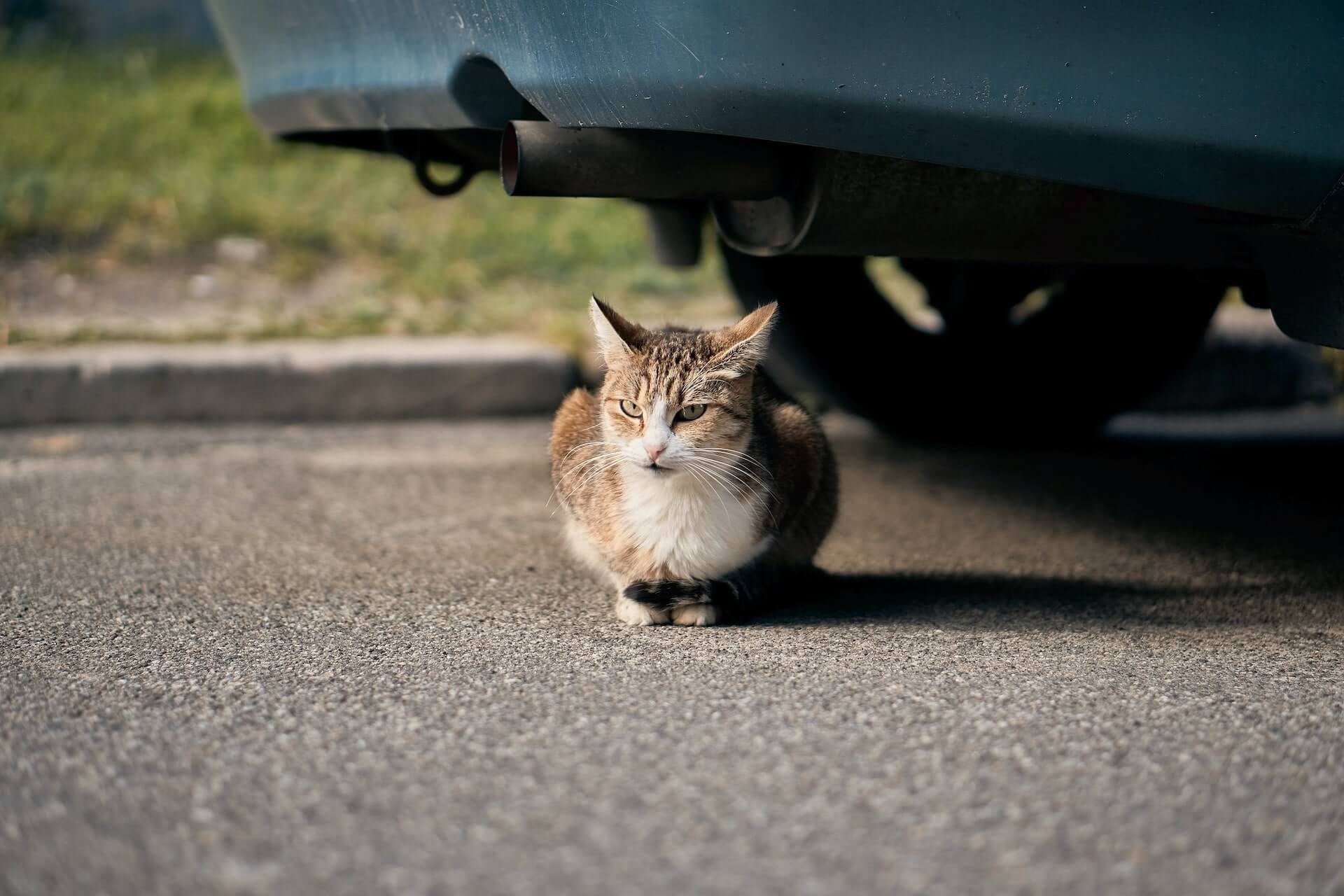
Keep in mind, there are ways to keep your outdoor cat safe. It’s why cat parents around the world – just like you – are investing in Tractive’s life-saving technology for their feline friends.

The perks of being an indoor cat
If your cat prefers staying indoors, you have a bit more reassurance you’ll (mostly) always know where they are. Indoor cats tend to be better protected from the dangers outdoor cats face. (So they’re generally safer.)
This is actually why indoor cats usually live longer than outdoor cats1.
- On average, your indoor cat might live a long, leisurely life of around 10-20 years by your side.
- Outdoor cats, on the other hand, might only live around 2-5 years.
(Unless – of course – you’re tracking their movements in real-time and intervening if you see them venturing somewhere dangerous or too far away.)

With all that said – doesn’t it make perfect sense to just…keep your cat indoors all day? After all, it’s ideal for their safety, right? Nope, not quite.
The downsides of being an indoor cat
Despite the benefits, indoor cats face some risks too. I.e., a less active lifestyle (and less stimulation overall). Which, over time, could lead to health issues or even depression in indoor cats.
Cats who don’t have outdoor access will typically have fewer opportunities to explore, play, roam and engage in their natural cat activities. Which means, if they’re cooped up indoors all day, they’re likely to experience:
- Boredom
- Depression
- Separation anxiety
- Obesity and other weight-related health issues (including diabetes and heart disease)
- Stress
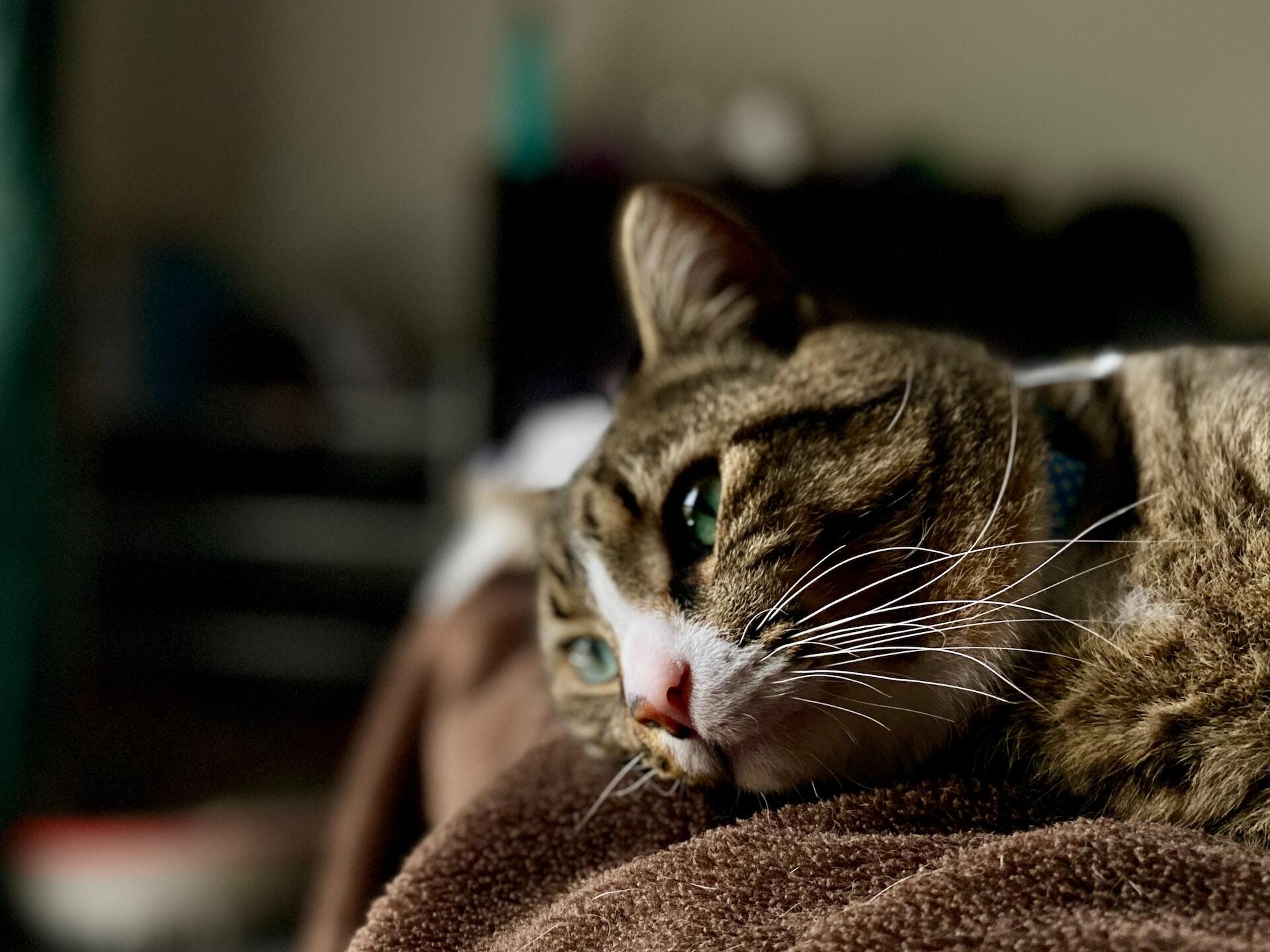
💡Besides real-time location tracking, your Tractive device also comes with a built-in motion detector and Activity Tracking. So you can get a picture of your cat’s daily activity – including how often they’ve been on the move all day – and ensure they get enough exercise.
With an indoor cat, you may also find that:
- You need to spend more time cleaning the litter box
- You need to do more to help your cat stay physically and mentally active
- Your cat may scratch the furniture, or engage in other unwanted behaviors
Read more:
- Signs Of Separation Anxiety In Cats & How To Handle It
- Cat Body Condition Score: Is Your Cat Underweight Or Overweight?
- How To Get A Cat To Exercise: Keeping Our Feline Friends Happy and Healthy
⚠️ Indoor cats might also get “lost”…well, indoors. Aka, stuck in a narrow space or somewhere difficult to escape from. (Like your wardrobe, an air vent, a basement or attic, or even inside your oven!) Where you might not hear them crying out for help.
Luckily, your Tractive device helps you locate your missing pet even indoors. Here are 3 quick and easy ways to find a pet playing hide and seek inside your house – with Tractive’s Bluetooth, Augmented Reality, and Light & Sound features.
When should I let my cat outside? Adult cats vs kittens
If you just got a new adult cat, it’s best to give them some time to get used your home before letting them go outside. A good rule of thumb is to wait 2-6 weeks before letting a new adult cat outdoors. After all, cats are territorial, so they’ll need time to map and adjust to their new territory.
Read more:
- Your 100% Stress-Free Guide To Moving Cats To A New Home
- Cat Territory Size And Range: How Far Does Your Cat Roam?
(Incidentally, your Tractive device actually helps you figure out your cat’s territory once you’ve set it up.)
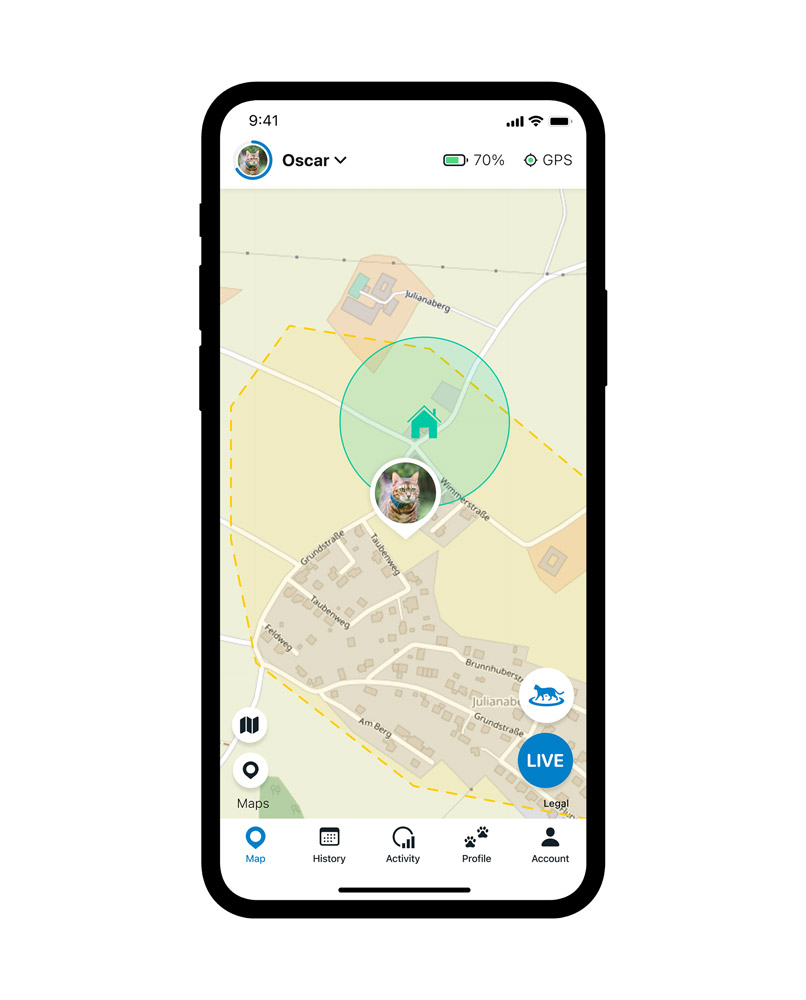
Waiting before letting them outside also ensures that your cat feels comfortable and confident in their new environment. And they’ll be more likely to know which home to return to, once you do let them outside.
⚠️ When it comes to kittens, wait until they are at least four or five months old before letting them venture into the great outdoors.
You should also make sure your cat is vaccinated, microchipped and neutered before letting them roam outdoors.
Will my cat’s behavior change if I let them go outside?
Possibly! Cats with outdoor access get to use up their excess energy exploring nature, following their curiosities and stalking prey.
So when they come back home, you may find that some unwanted behaviors have stopped or gradually reduce with time. Behaviors like aggression, scratching furniture or peeing outside of the litter box. Or they’ll be more likely to relax from having spent all day on the move. (Keeping them happy and healthy for the long run.)
Letting your cat outside for the first time: Tips for success
Here are some best practices and tips for letting your cat outside safely – if you’re doing it for the first time ever.
What to do before you let your cat outside
Before letting your cat go outdoors, make sure to do the following:
- Microchip your cat to ensure they can be identified if lost and brought into a vet or shelter.
- Equip your cat with a quick-release, safety collar and and an ID tag with your contact details – so you can be contacted in case they’re found missing or injured.
(Psst – the Tractive CAT Mini comes accompanies with a weight-adjustable safety collar. Perfect for cats of all ages, shapes, and sizes.)
- Make sure your cat has had all of the recommended vaccinations for outdoor cats – and that they’re up to date.
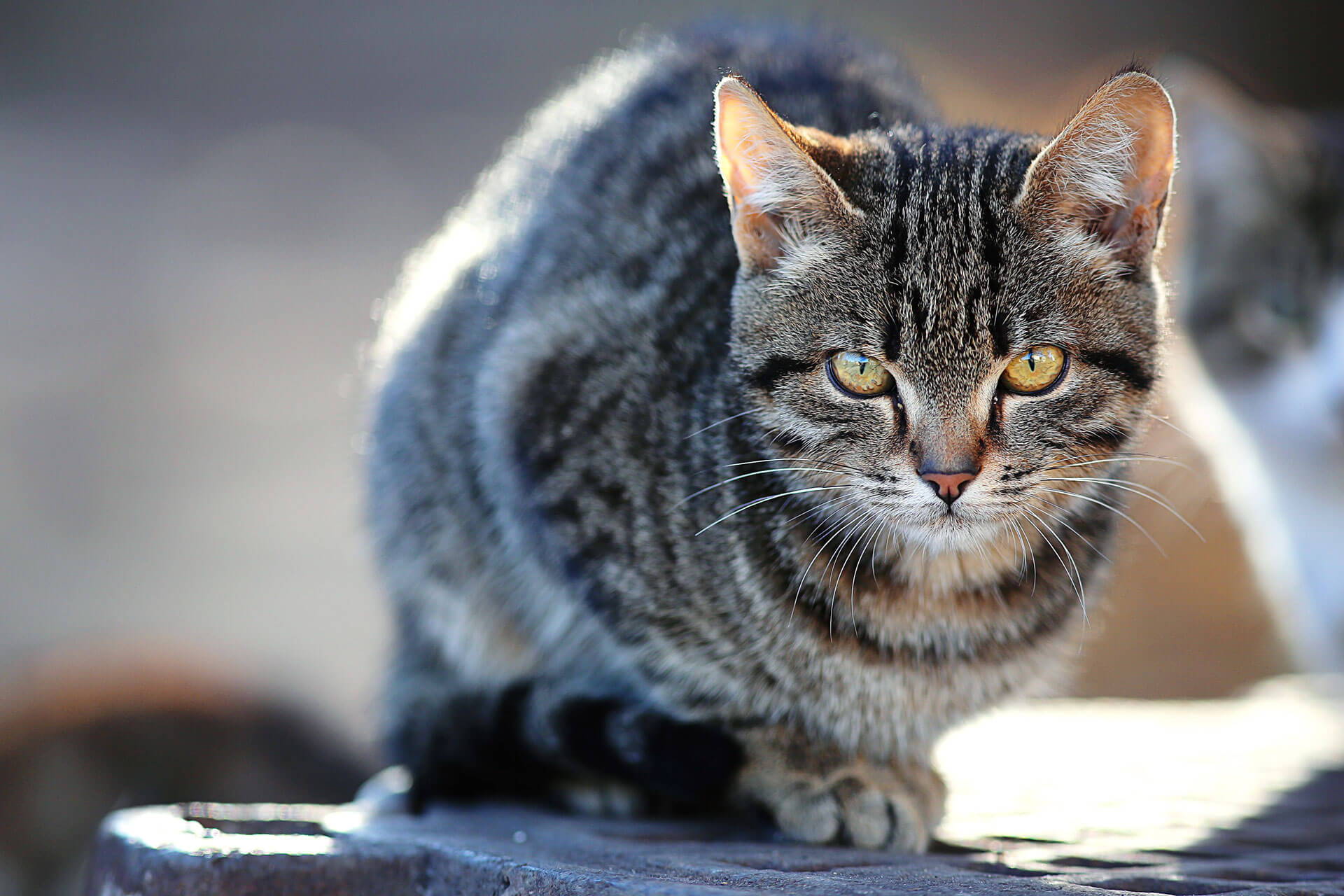
- Get your cat neutered. This will prevent them from becoming a nuisance at your neighbors’ who have female cats.
- Make your backyard or garden cat-friendly – remove any poisonous plants or other toxic substances.
- Sprinkle some of their used litter around the perimeter of your yard – to help them establish their new territory.
- Take a good photo of your cat in case you need to make a lost cat poster.
- Make sure your cat can recognize their name and train them to come to you when you call it.
And of course…
- Get your cat a GPS cat tracker and attach it to their collar – so you can track and find your cat anywhere, anytime. In an emergency, it might just end up saving your cat’s life.
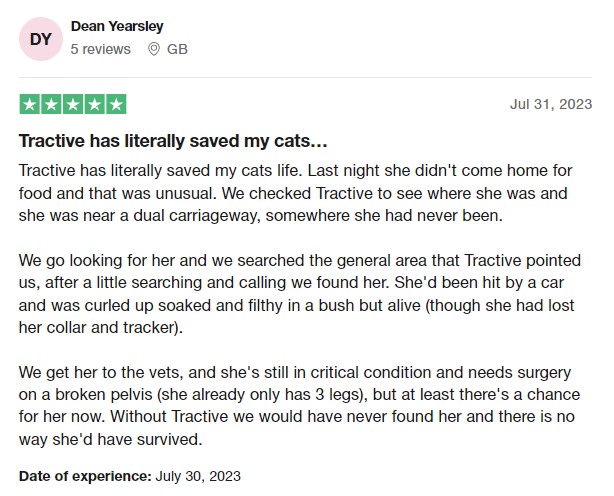
How to train your cat to come when called
If your cat doesn’t already come when you call their name, you can train them to do so.
- Call your cat’s name while shaking a packet of their favorite treats.
- When they come to you, give them a treat.
- Repeat several times in different spots around the house until your cat always comes to you when you call their name.
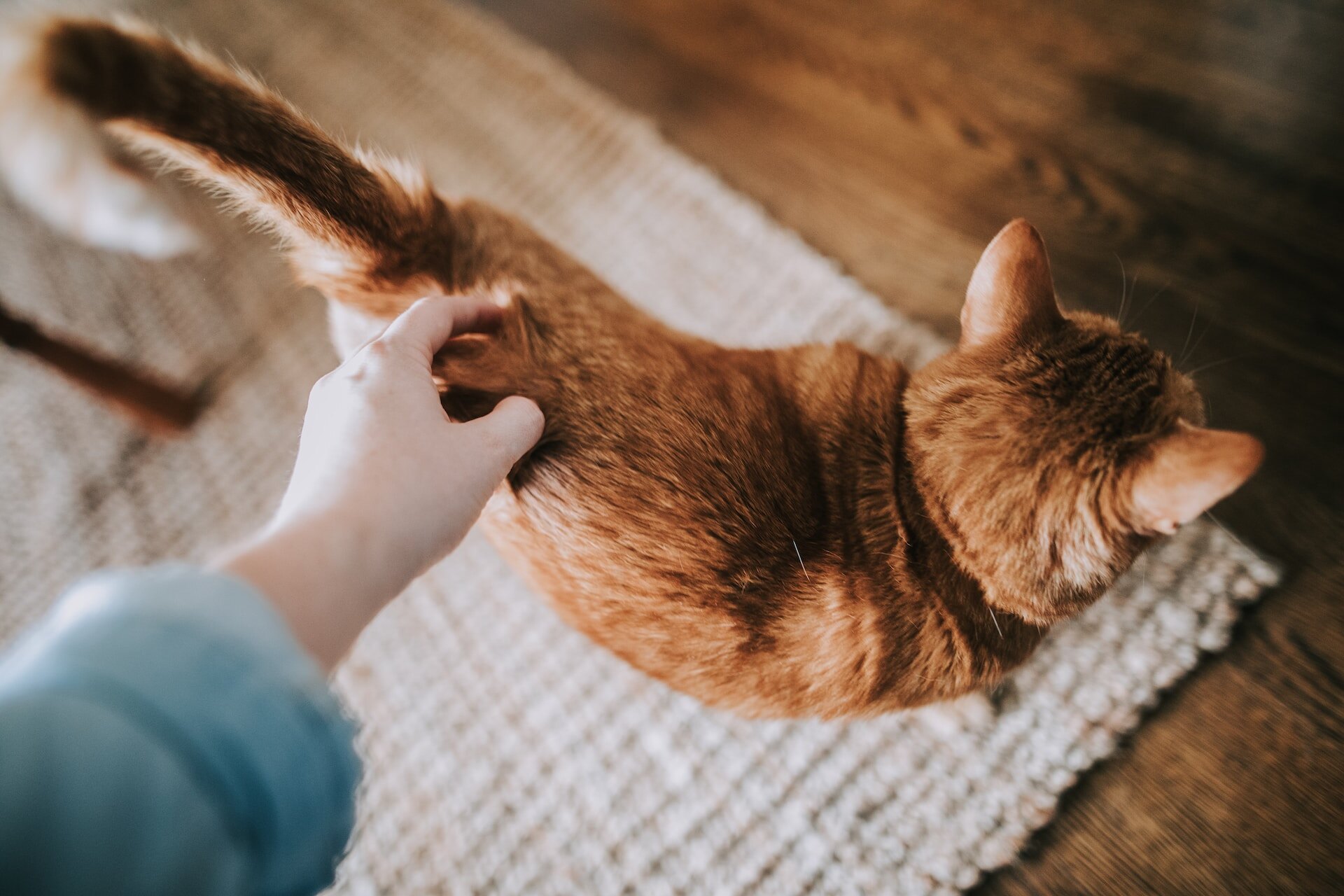
Read more: Cat Clicker Training: Tips, Tricks & Best Practices.
What to do during your cat’s first outdoor adventures
Once your cat is prepared for their first outdoor outing, here are some tips to make it a success:
- For their first few outdoor adventures, it’s a good idea to go with them and supervise your cat.
- Leave the door open so your cat can return inside if they want to.
- Let your cat explore the new outdoor area undisturbed if possible.
- Call your cat back when you feel like they’ve wandered too far – and reward them for doing so.
- Let your cat roam again sometimes after receiving a reward – so they don’t always associate coming when called with going inside.
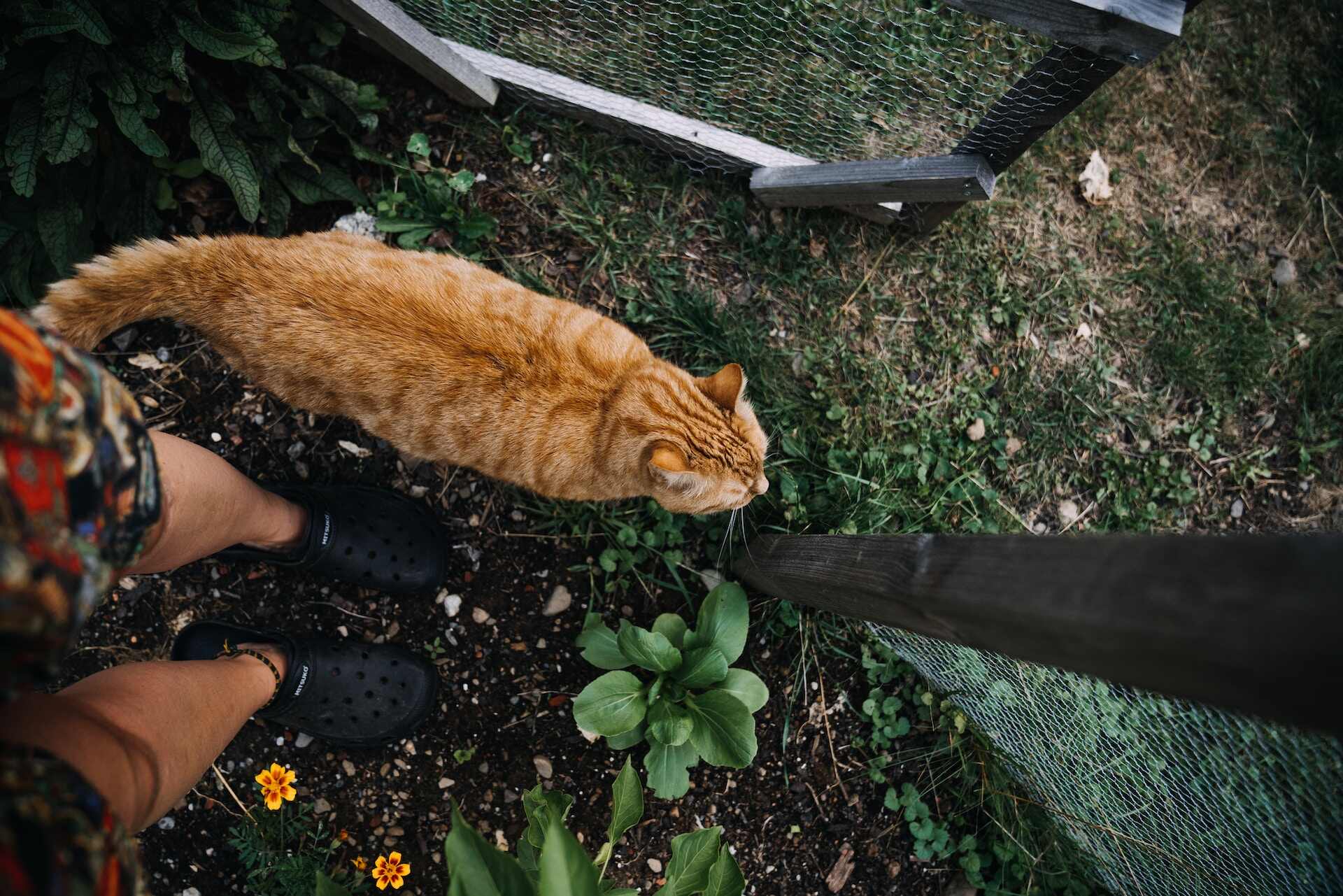
- Gradually increase the length of time your cat is outside over a few days/sessions.
- Make a routine out of it – your cat can learn when it’s time to go outside and when it’s time to come back in.
- Once your cat seems comfortable being outside, let them come and go without you.
- Always try to let your cat back indoors immediately when they show signs of wanting to be back inside.
- Consider installing a cat flap to give your kitty true independence.
Did you know: With the power of their senses, cats often find their home. Some cats were even able to find their way home years after they got lost
How to better understand your cat’s favorite hangout spots
As you let your cat outdoors more often, you’ll start to notice they have a bunch of favorite hiding, hunting, and hanging out spots. (Maybe a nearby barn or a patch of woodland full of mice or that one spot under your porch.)
And here’s why this matters: it can actually help you find your cat easier if they disappear for longer than usual. I.e., if you’re suspecting your cat is missing, you could start by checking their favorite spots first – and then widen your search, if necessary.
Read more: How To Find A Lost Cat: All You Need To Know
Which is where Tractive’s Heat Map and Location History comes in handy.

And here’s an example of it working in action. The San Francisco Feral Cat Coalition recently rescued a litter of sick kittens by attaching a Tractive tracker to Mama Cat.
From her Heat Map and Location History, they found she’d deposited each kitten in different areas. (Likely to keep them safe.)
With a little team work with the local community, they were able to locate each kitten, take them home, get them washed and debugged – and rehomed to warm, safe, loving forever homes.
Read more: This Family of Sick Kittens Was Rescued With The Tractive GPS
How to train a cat to go outside and come back
If you want to encourage your cat to go out and come back home on their own, here are some tips that can help.
- Feed your feline friend indoors only – and on a regular schedule. So they’ll want to come back inside for food.
- Start off slow – only let your cat outdoors for 10 minutes at a time at first, then bring them indoors.
- Supervise your cat during the first few times of outdoor access.

- When you call them back inside, use a happy tone of voice.
- Give them a treat when you bring them back inside.
- Let your cat go out and bring them back in at the same time every day.
- Don’t let them spend the night outdoors.
- Get a GPS cat tracker – so you can go and get them if necessary.
Fun fact: Some Tractive cat parents have even been able to train their cat to come home using the sound/beeper feature of the popular cat tracker. Paging kitty: time to come home!
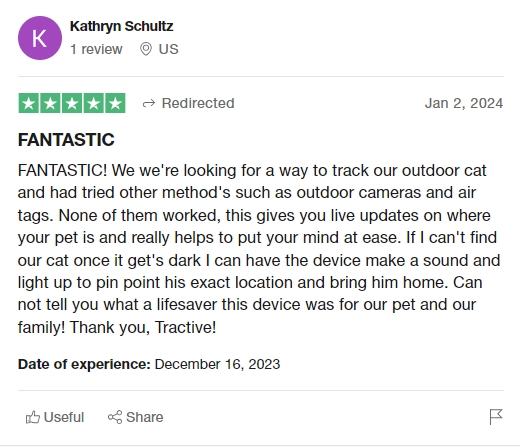
Use a cat tracker to get peace of mind with an outdoor cat
Your new cat is your bundle of joy, so don’t take any chances if you do let them roam free outside. While they are young, or new to your family, cats may behave unpredictably.
Luckily, with the help of a GPS cat tracker, your cat’s unpredictable behavior will be no match for you – with the latest pet technology in your pocket. Just attach the tracker to your cat’s collar, and open the app to check on your cat’s whereabouts anytime.
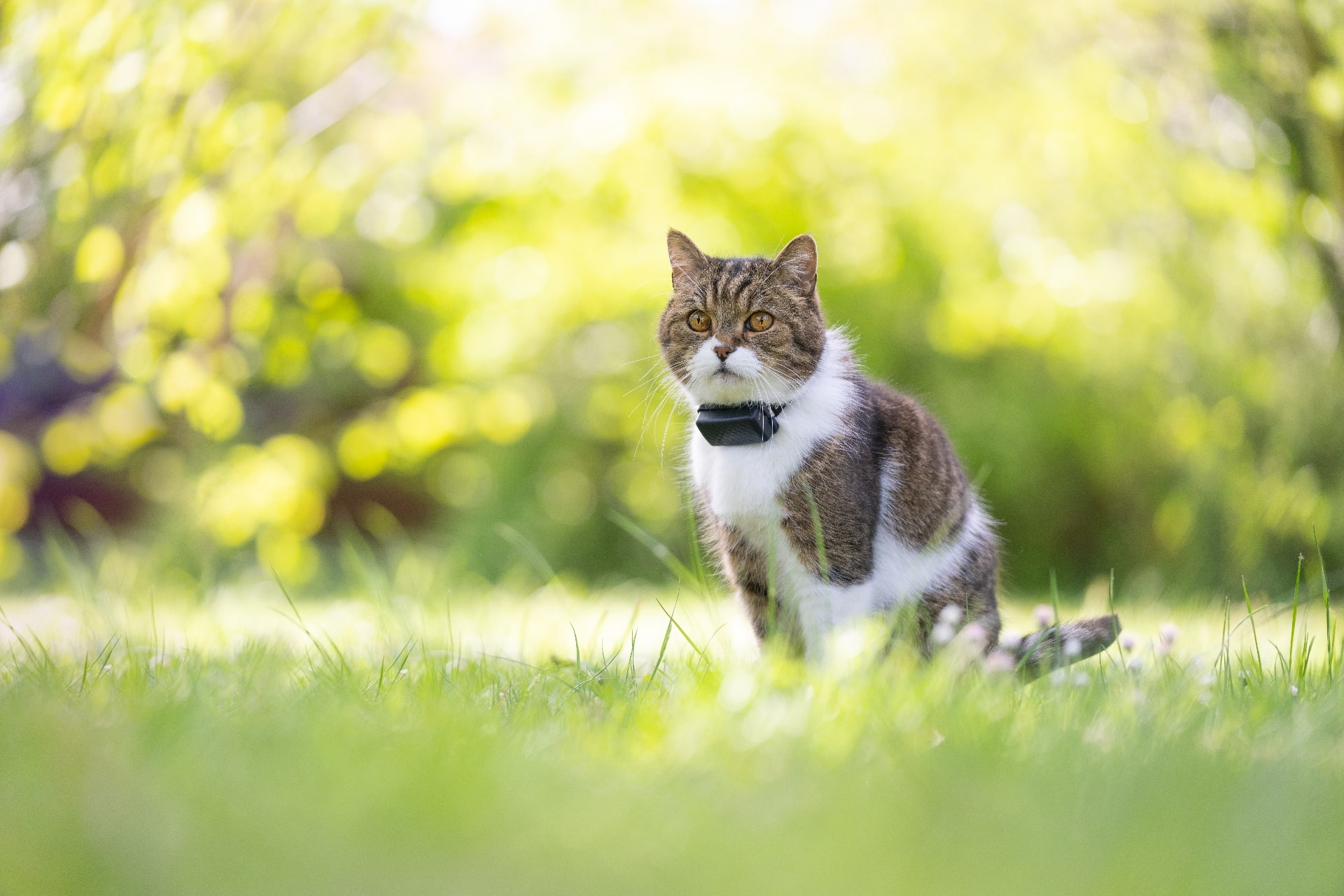
Alternatives to giving your cat unlimited access to the outdoors
Some cat parents want to give their cats the benefits of the great outdoors, while keeping them protected from the potential dangers. If this is you, you can try these options to give your cat safe, limited outdoor access:
- Train your cat to walk on a leash with a harness.
- Cat-proof your balcony for your feline to enjoy.
- Build your cat a catio – they’ll be entertained (and safe) for hours!

Read more:
- How To Harness Train A Cat In 7 Easy Steps
- 10+ Tips To Create The Perfect Cat Proof Balcony
- Catio: What Makes The Perfect Outdoor Cat Enclosure For Your Cat
Tips for taking care of an indoor cat
In case you decide to keep your cat indoors, there are several things you can do to keep them healthy and happy. First, create an indoor environment that supports your cat’s natural behaviors – they should be able to climb, jump, hide and scratch.
Consider adding the following items to your home to make it more cat friendly:
- toys
- feeding puzzle
- scratching post
- cat tower or tree
- window perch
- cat treadmill
- wall shelves for your cat to climb on

Also, consider getting another cat or pet so your indoor kitty will have some company. Be sure that your cat has enough space to move around – and a clean, safe environment.
Last but not least, don’t forget to make time to play with your cat regularly. Not only will it help your indoor cat stay physically active and healthy, but it will also boost the bond between you and your feline friend.
So…should I let my cat outside?
Yes – provided you can guarantee their safety. Because when it comes to us hoomans and our cats, no two individuals are the same.
- Some cat parents insist that it’s not okay under any circumstances to let cats roam outdoors.
- While others take the opposite stance – and see keeping a cat indoors all their life as cruel.
The fact is, there are many factors to consider when deciding which option is best for your furry friend. Factors like your cat’s age, health, environment – and how you can shield them from the dangers they might face outside – all play a role.

Both indoor and outdoor cats can live happy, healthy lives – but it’s your responsibility as a pet parent to ensure they have everything they need to do so. That means –
- Keeping them safe if they do go outdoors. Track their location in real-time and over an unlimited range with your Tractive GPS. Plus, learn their favorite hangout spots so you can find them quicker and easier.
- Making sure they can stay active and happy, if you opt to have an indoor cat. Ensure they’re getting enough exercise by checking their Activity Tracking data and prevent health issues down the line.

Whatever you do, be sure to make the most of your time together with your cat. The lifetime of love and joy they’ll provide you in return is always worth it.
Found this post helpful? Share it with a friend or a loved one – and let’s help build a safer, kinder world for our furry friends together.




